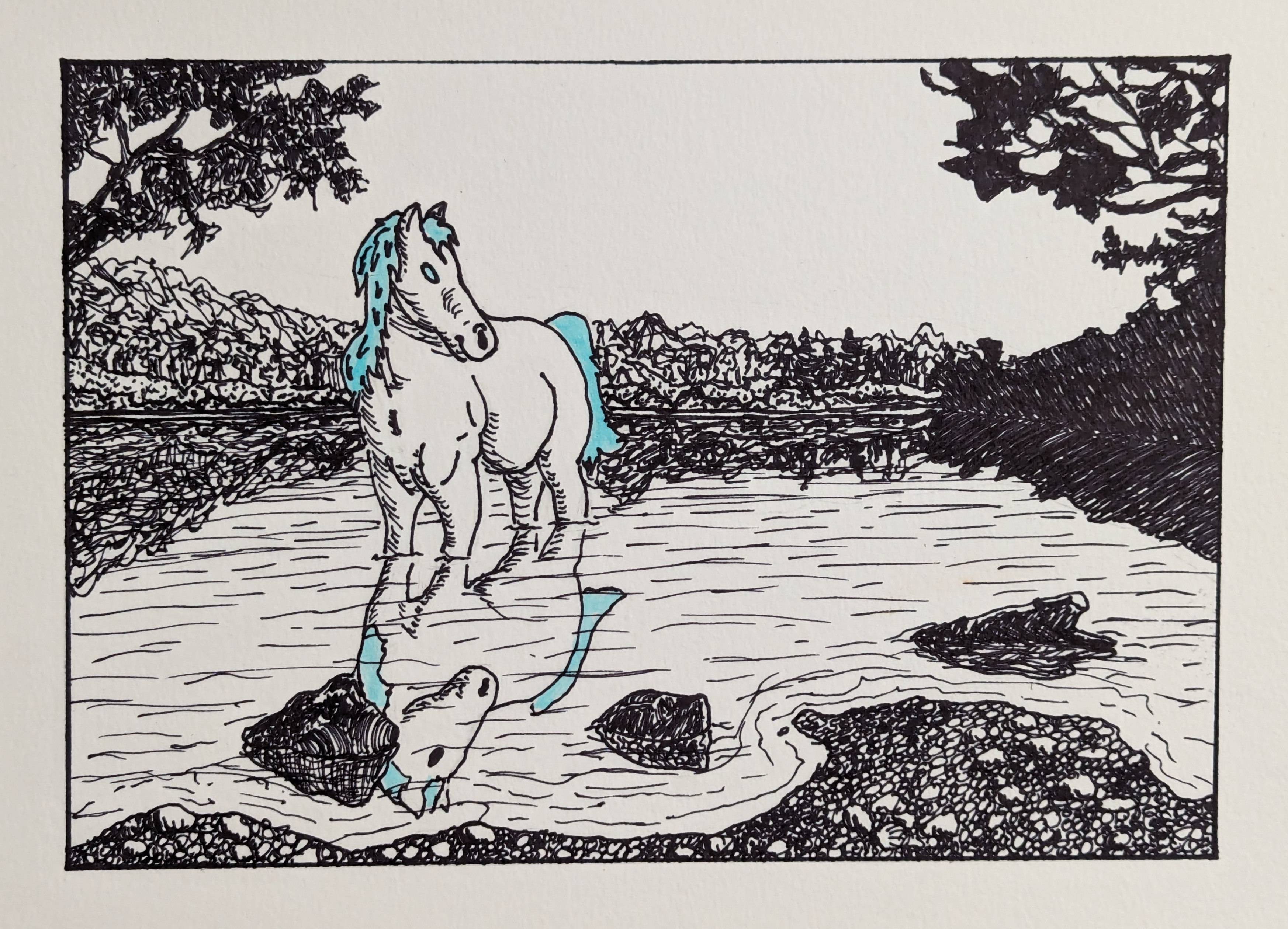As I have been giving more in depth research into Cryptids and other monsters of legend and lore, I have found that quite a few of them are even scarier than you think. This is especially true with the ones that appear to be pretty, peaceful, or benevolent. Take Kelpie for instance. While most of its legends refer to it as a black horse, I had always heard of them as white with a light blue mane. You know, like that cute little pony toy that they made a whole cartoon series about. Imagine you are walking by a Scottish Loch and see this pretty horse standing in a foot of water, seeming to invite you in to pet her. It seems nice until you do and your hand immediately starts to freeze when you touch her….and then she bites and stomps you into the water drowning you. Talk about plots twisting. Then again, why would you trust anything in a Scottish Loch.
At any rate, here is the background and details you want about Kelpie.
The Legend of the Kelpie
Regional Names
- Scottish Gaelic: Cailpeach, Each-Uisge
- English: Water Horse
- Other Names: Water Kelpie
Known Origin and Basic Lore
The Kelpie is a mythological creature originating from Scottish folklore, particularly associated with the Highlands. These shape-shifting water spirits are often depicted as malevolent beings that inhabit the lochs and rivers of Scotland. They are known for their ability to transform into both horses and humans, using their allure to lure unsuspecting victims to watery graves.
Significant Sightings
- Loch Ness: Historical tales suggest that a Kelpie inhabited Loch Ness long before the famous monster sightings.
- River Teviot: A well-known legend speaks of a Kelpie that haunted the River Teviot, transforming into a handsome man to lure a local girl.
- Loch Morar: Another significant Kelpie sighting is associated with Loch Morar, where stories of a water spirit have been told for generations.
Physical Description
- Horse Form: Kelpies typically appear as large, black horses with constantly wet, dripping manes. Their appearance is both beautiful and eerie, often glistening with water.
- Human Form: In human form, Kelpies are exceptionally attractive, with features designed to lure humans. They can appear as either men or women, exuding a mysterious and captivating charm.
- Other Forms: Some tales suggest Kelpies can also take on the form of a beautiful young woman to better lure their victims.
Behaviors
- Luring Victims: Kelpies use their shape-shifting abilities to lure humans to the water. Once a person touches the Kelpie, they become magically stuck to it.
- Drowning: The Kelpie then drags its victim into the water to drown them. In some versions, it devours them, leaving only the entrails to wash ashore.
- Warnings: In rare benevolent tales, Kelpies warn humans of impending storms or danger.
Abilities
- Shape-Shifting: Kelpies can transform between horse and human forms at will.
- Supernatural Strength: As horses, they possess incredible strength, able to drag multiple victims into the water.
- Water Control: They are believed to have control over water, using it to their advantage to capture prey.
Preferred Habitat
- Water Bodies: Kelpies prefer freshwater bodies such as lochs, rivers, and streams. They are most commonly associated with deep, dark, and often treacherous waters.
- Isolation: They favor isolated and remote water bodies, away from human settlements, although they can occasionally be found near populated areas to find victims.
Range of Sightings
- Scotland: Kelpies are primarily found in Scotland, with numerous sightings and legends across the Highlands and other regions.
- Surrounding Areas: There are occasional references to similar creatures in other parts of the British Isles, but the Kelpie is most strongly associated with Scotland.
Likelihood of Existence Based on Similar Species
While the existence of Kelpies as supernatural beings is a matter of folklore, some suggest that the legends could be based on sightings of real animals or natural phenomena:
- Misidentified Animals: Sightings may have been misidentified encounters with large aquatic animals such as seals or otters.
- Natural Phenomena: Strange reflections, floating vegetation, or unusual wave patterns could have contributed to Kelpie tales.
- Cultural Stories: The Kelpie legend, like many mythological creatures, could be a cultural invention to explain the mysterious and often dangerous nature of water bodies.
Conclusion
The Kelpie is a fascinating and enduring element of Scottish folklore, embodying the mysterious and often perilous nature of the natural world. Whether viewed as a cautionary tale or a manifestation of the human imagination, the Kelpie continues to captivate and intrigue, maintaining its place in the rich tapestry of myth and legend.


